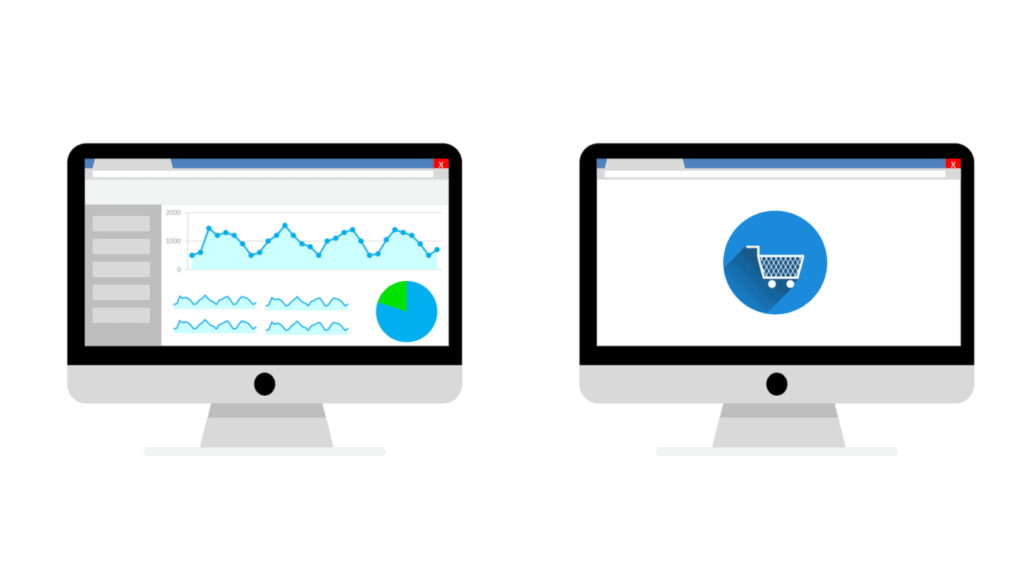ECommerce Conversion Rate Using Google Analytics – Steps To Follow!
Nikki Attkisson | Last Updated : December 13, 2021In this article, we will discuss how e-commerce conversion rates can be increased with the help of Google Analytics. You may have heard that e-commerce conversion rates are on a downward trend and it’s true! In the last five years, e-commerce conversion rates have decreased by about 20%. With these new statistics in mind, let’s dive into how to increase your e-commerce rate using google analytics.
What is an E-Commerce Conversion?
An e-commerce conversion happens when someone who has visited your website purchases something from you online. The number of conversions you receive tells you whether or not your site is doing well. A high number means that people are purchasing what you’re selling while a low number means that people are not converting.

Ways to Increase Conversion Rates using Google Analytics
There are many different ways to increase your e-commerce conversion rate, but we’re going to focus on four main methods today: improving website design and user experience (UX), improving the checkout process, increasing traffic to your site, and A/B testing.
- We’ll start with website design and user experience. There are many different ways to improve website design and user experience, but we’ll focus on a few main methods today: improving the layout of your site, making it easy for users to find what they’re looking for, using clear and concise language, ensuring that your pages load quickly, and providing good customer service.
Improving the layout of your e-commerce site is essential. You want to make sure that the most important elements are easily visible and that users don’t have to scroll too much to find what they’re looking for. Use clear and concise language on your pages so that people know what you’re selling as soon as they arrive on your page. Make sure your pages load quickly so that users don’t get impatient and leave your site. And finally, provide good customer service in case people have any questions or problems with their purchase.
- The next method is improving the checkout process. Making the checkout process easy for users is essential for increasing e-commerce conversions. You want to make sure that users can checkout quickly and easily without having to fill out a lot of unnecessary information. You can also offer guest checkout so that users don’t have to create an account to make a purchase. And finally, you can provide real-time shipping updates so that users know exactly when their purchase will arrive.
- The third method is increasing traffic to your e-commerce site. More people on your e-commerce site means more potential customers and increased e-commerce conversions! You want to make sure that you’re getting as much organic search engine (SEO) traffic as possible by using SEO-friendly website content, having a well-optimized page speed. You can also use paid advertising to increase traffic to your e-commerce site.
- The fourth and final method is A/B testing.A/B testing is a great way to figure out what’s working and what’s not working on your e-commerce site. You can test different versions of your website pages to see which one converts the most visitors into customers. You can also test different versions of your checkout process to see which one is the easiest for users. A/B testing is a great way to improve your e-commerce conversion rate!
Conclusion
There are many different ways to increase your e-commerce conversion rate using Google Analytics. You can improve your e-commerce site’s design and user experience, you can improve the checkout process, increase traffic to your e-commerce site with organic SEO or paid advertising, and A/B test different versions of pages and the checkout process. Use these methods to increase your e-commerce conversions and improve your business’s bottom line!
With over 15 years as a practicing journalist, Nikki Attkisson found herself at Powdersville Post now after working at several other publications. She is an award-winning journalist with an entrepreneurial spirit and worked as a journalist covering technology, innovation, environmental issues, politics, health etc. Nikki Attkisson has also worked on product development, content strategy, and editorial management for numerous media companies. She began her career at local news stations and worked as a reporter in national newspapers.
